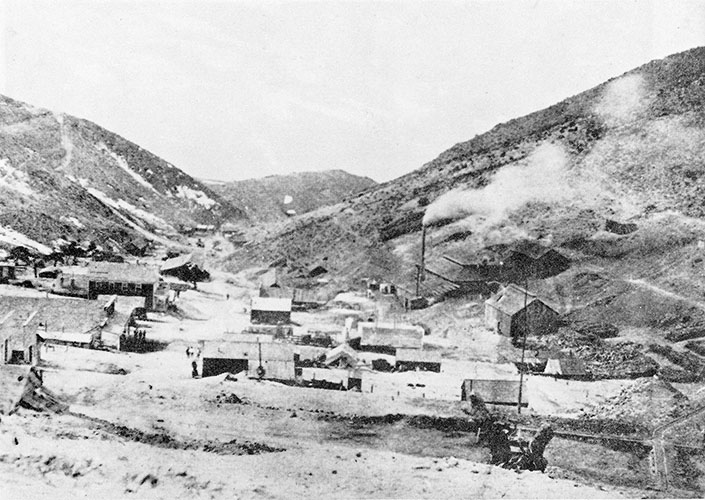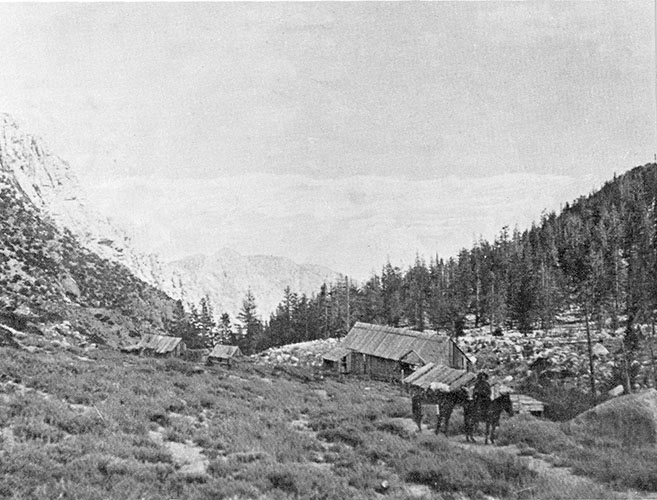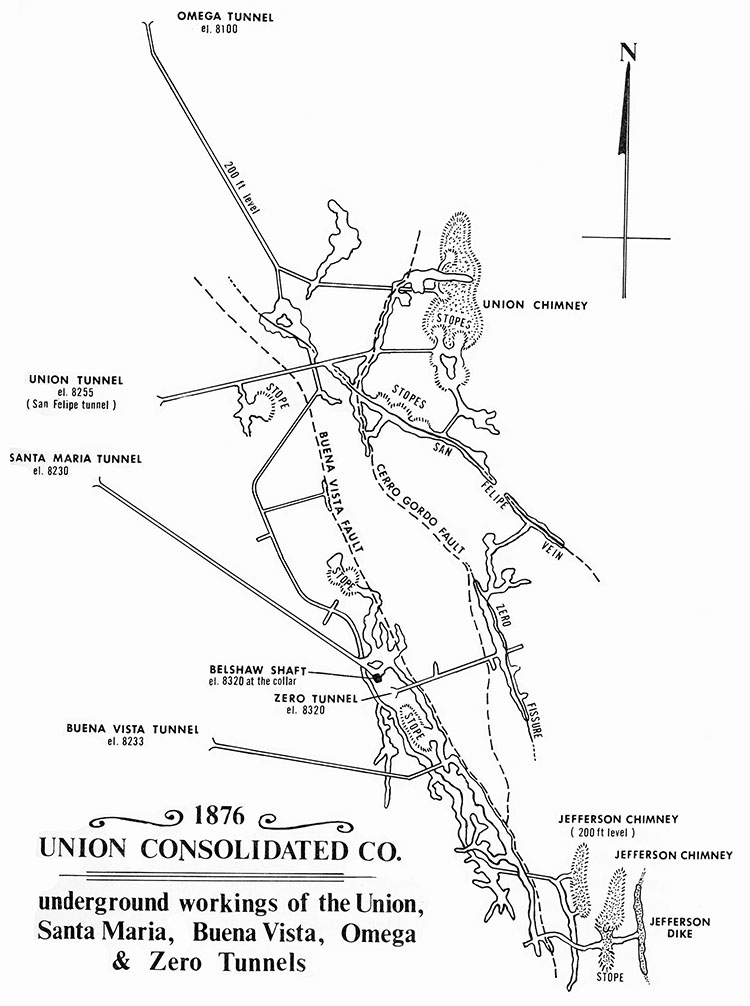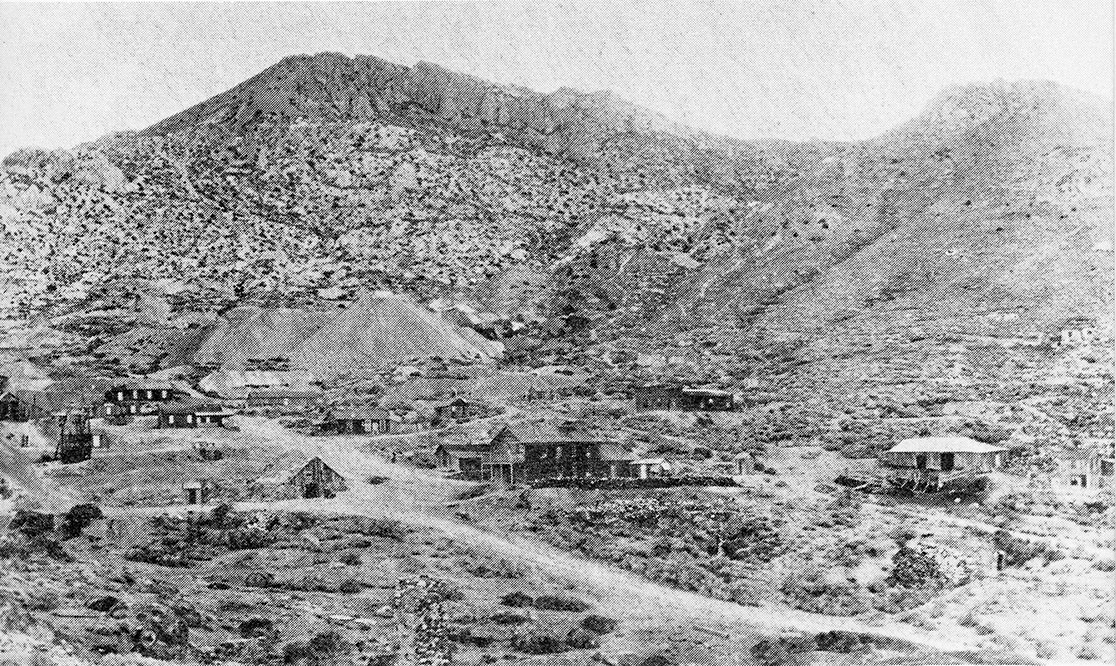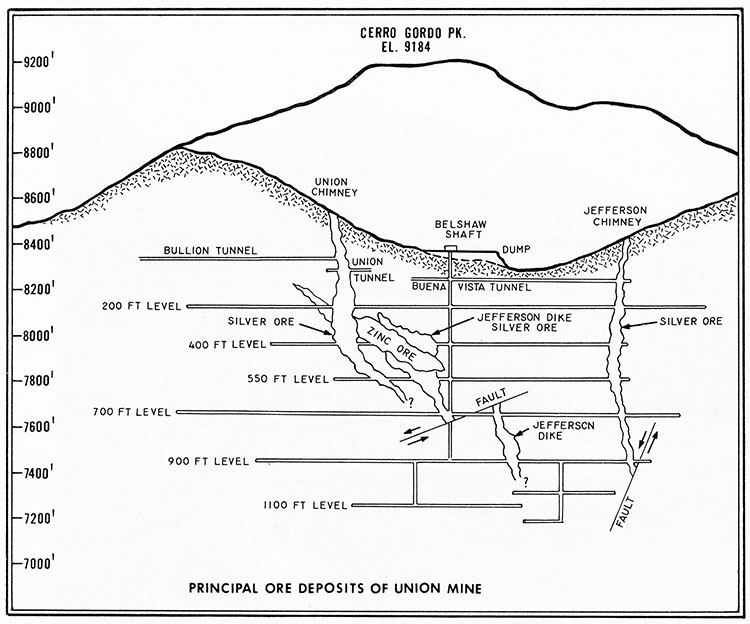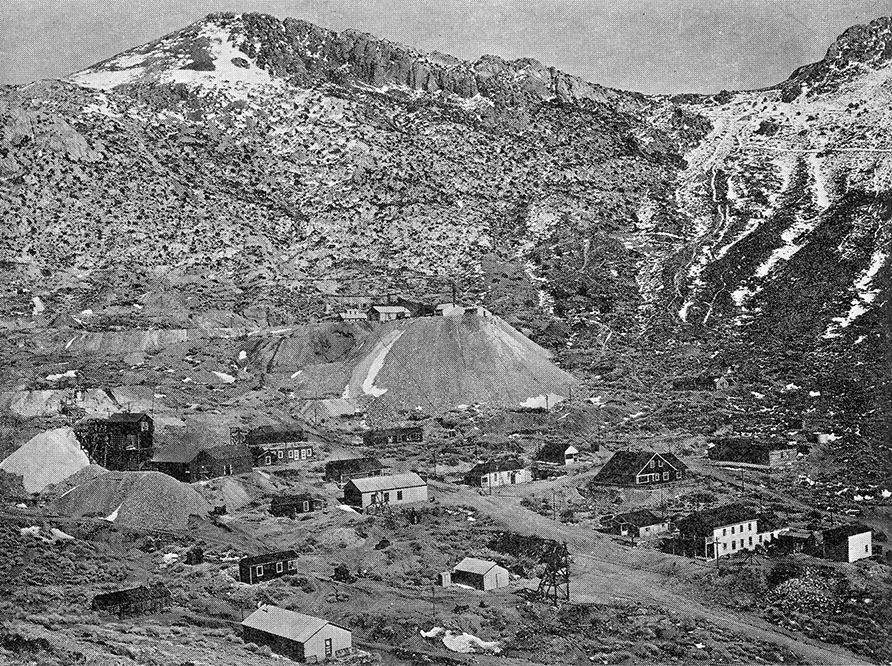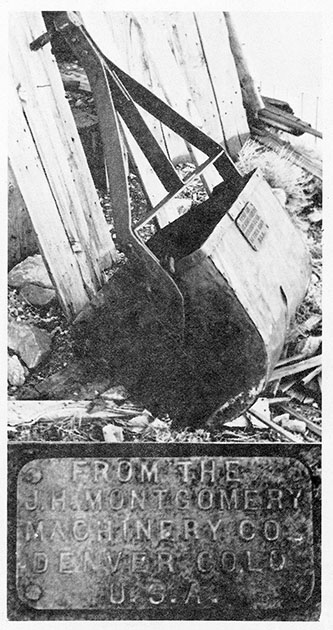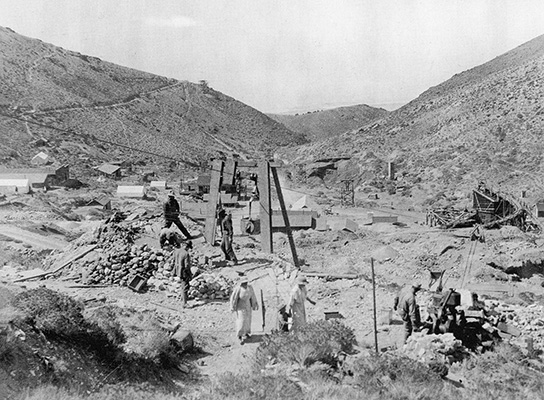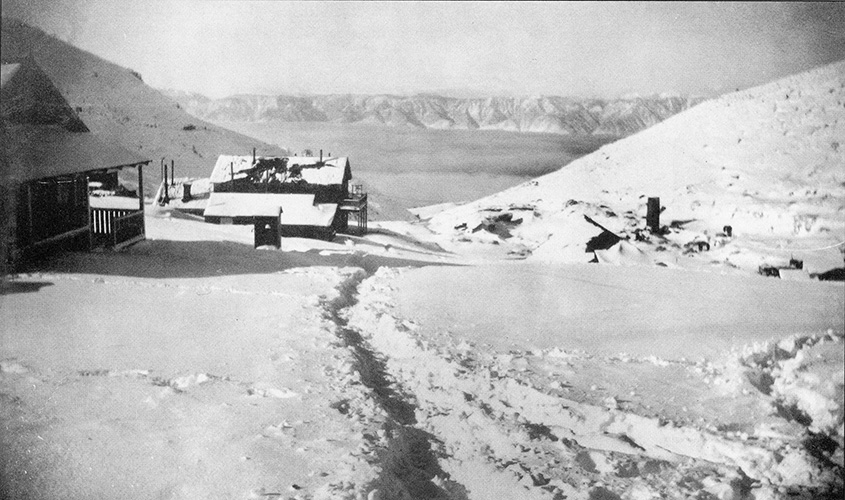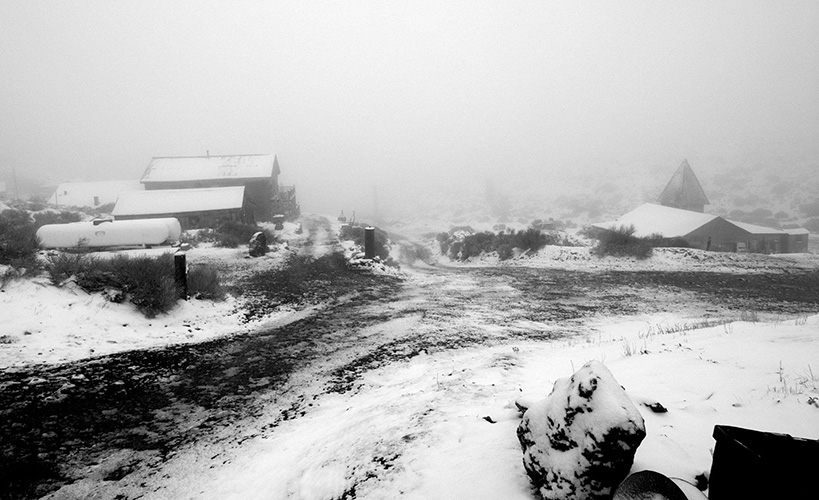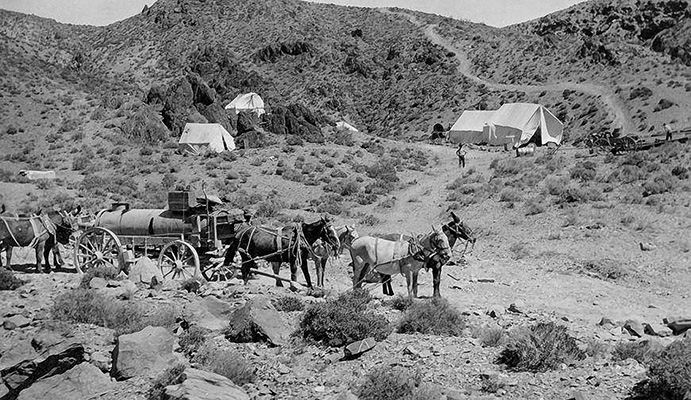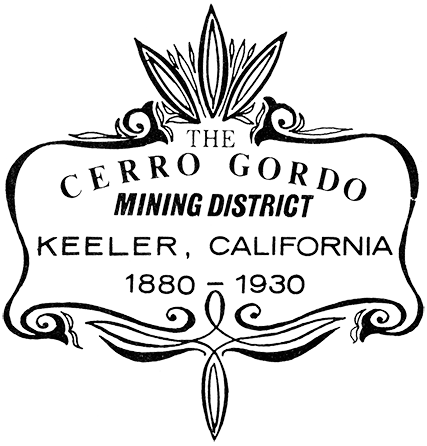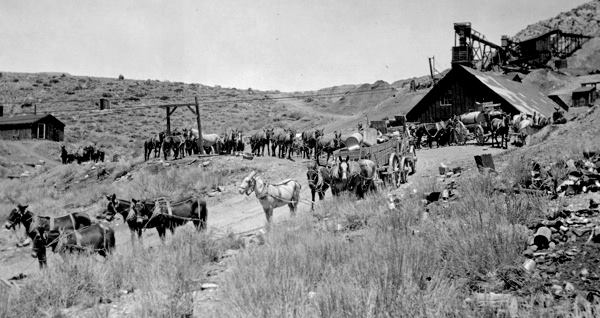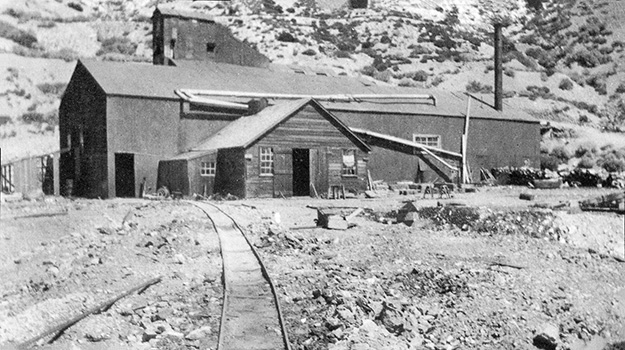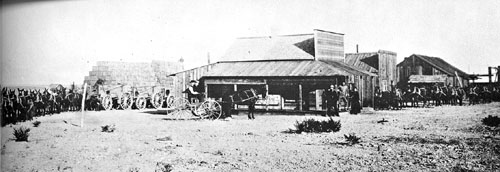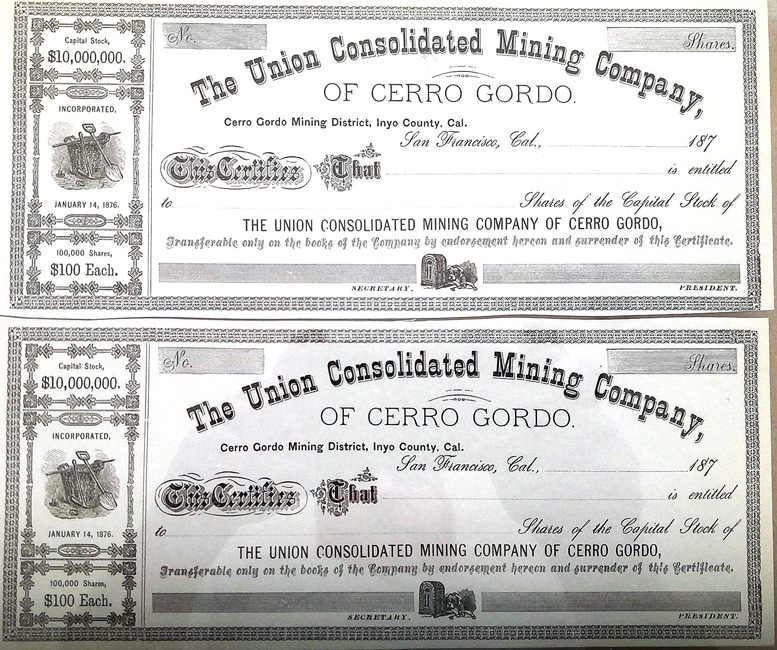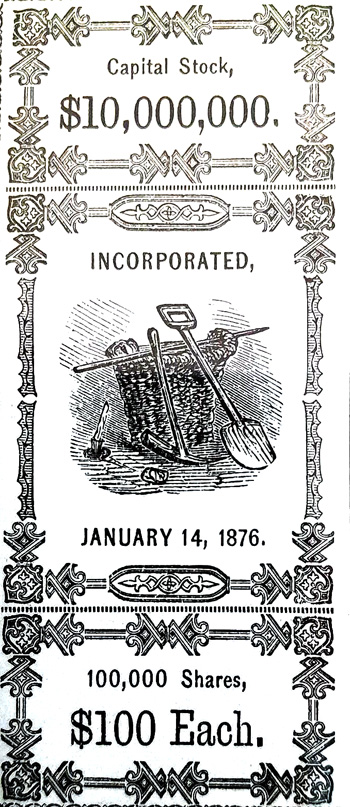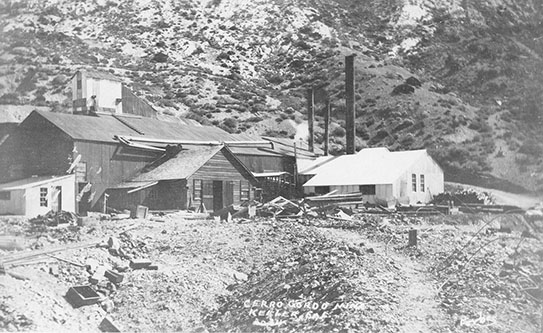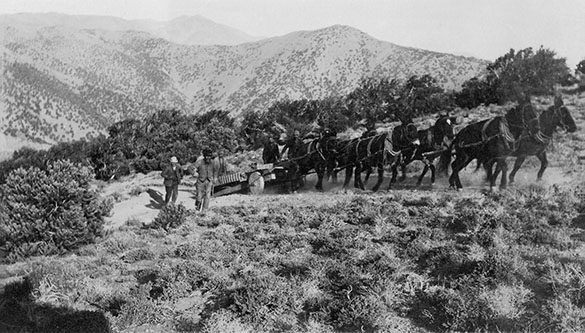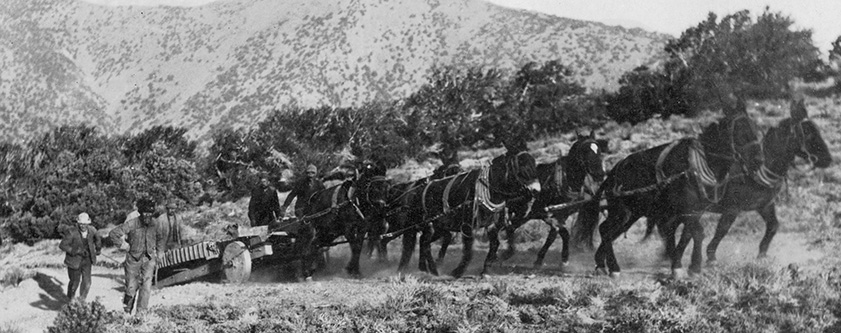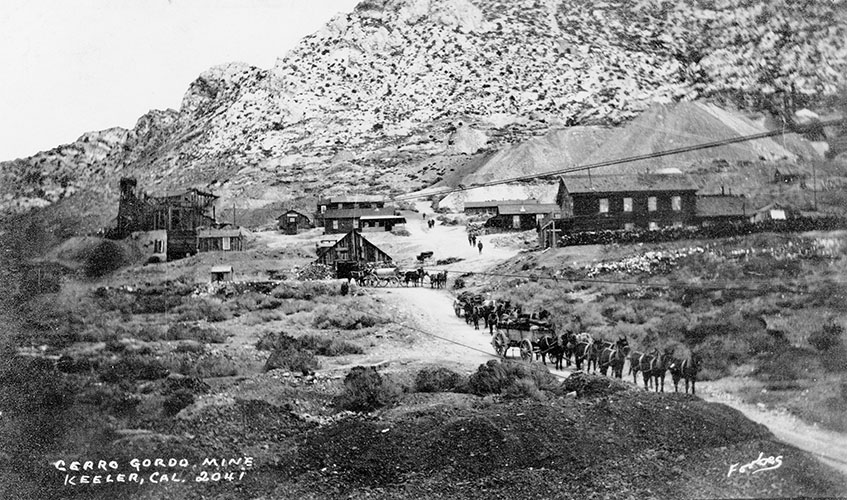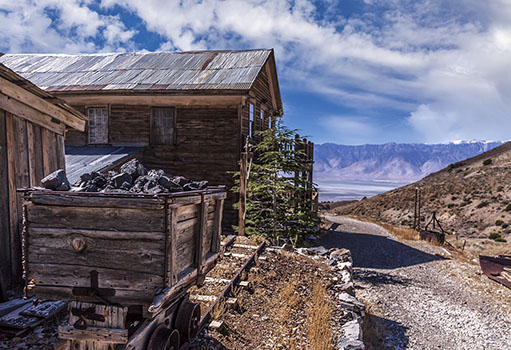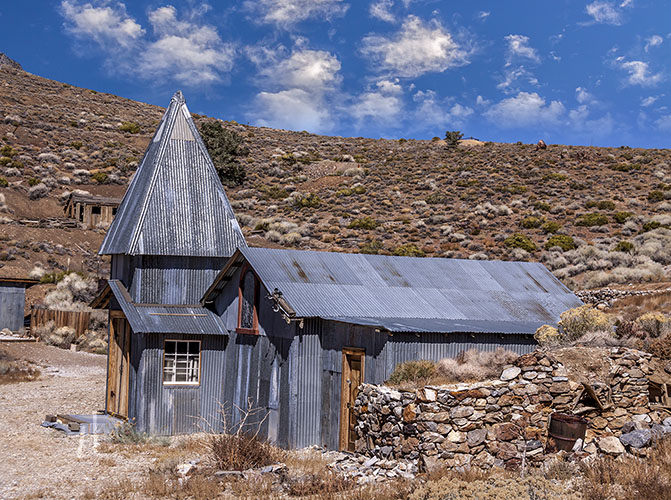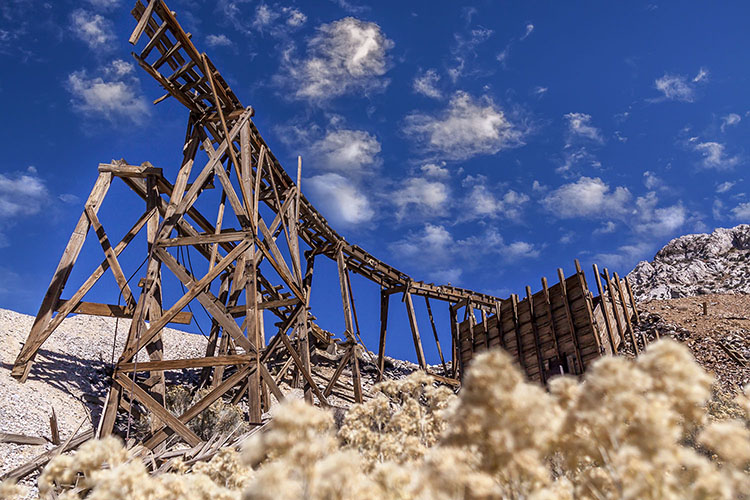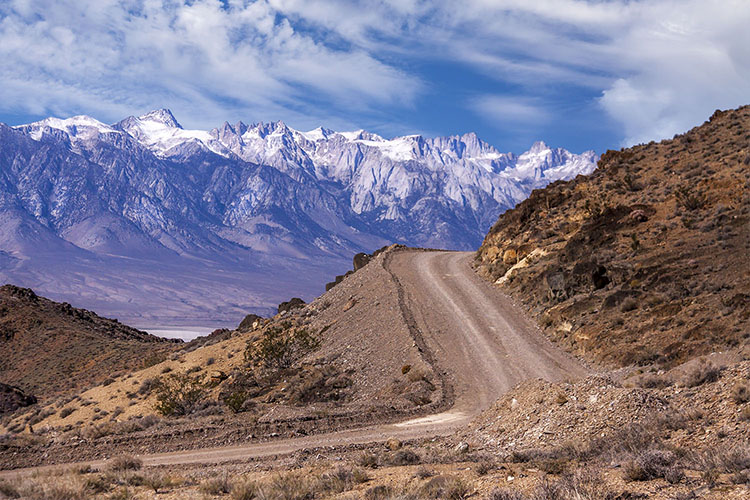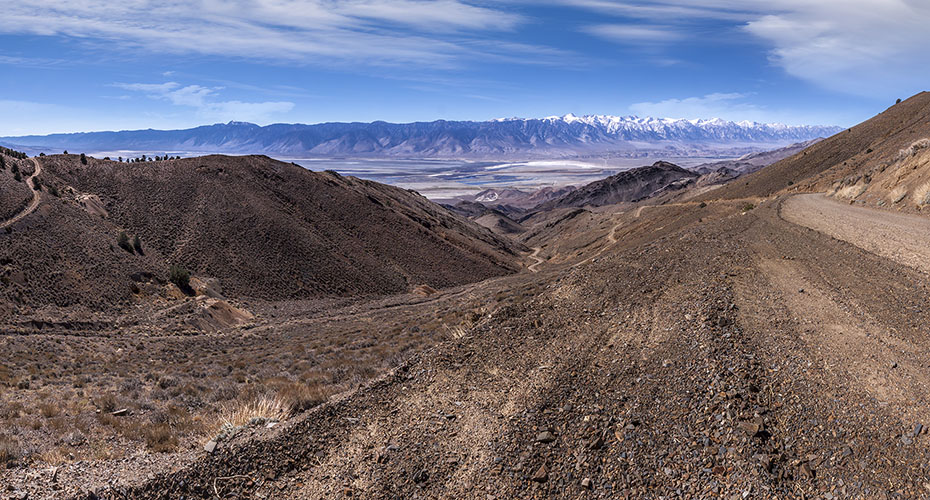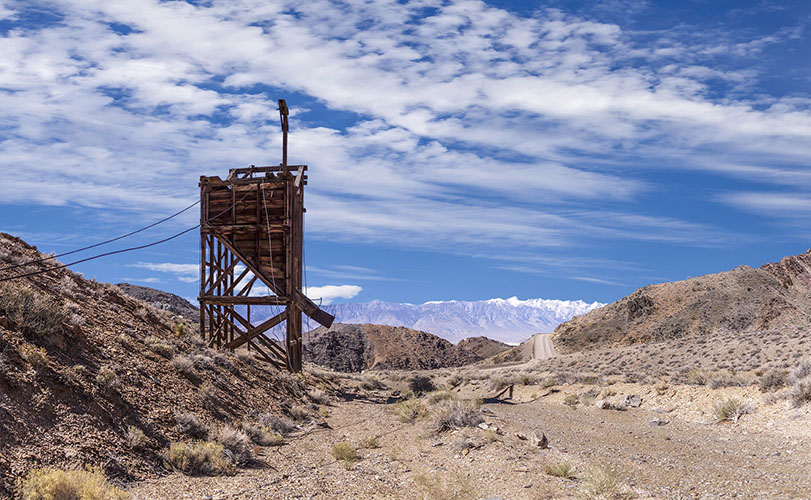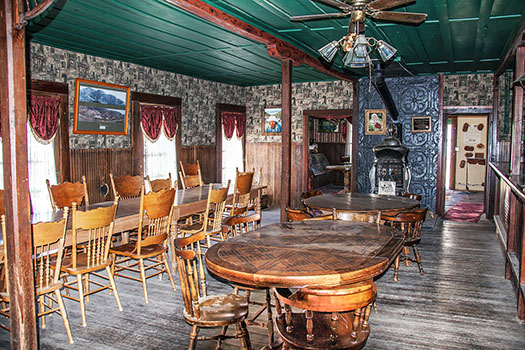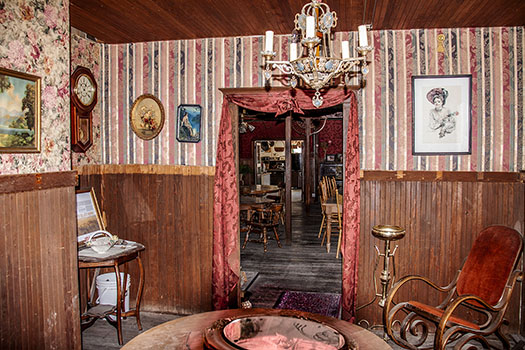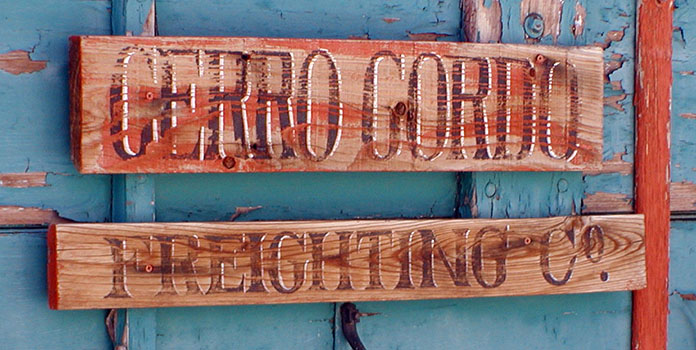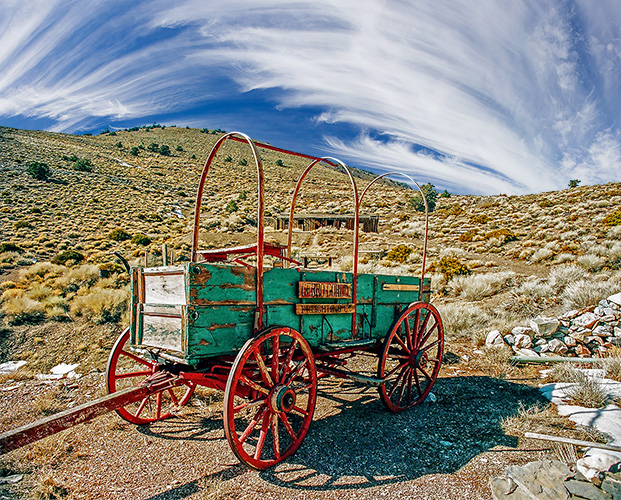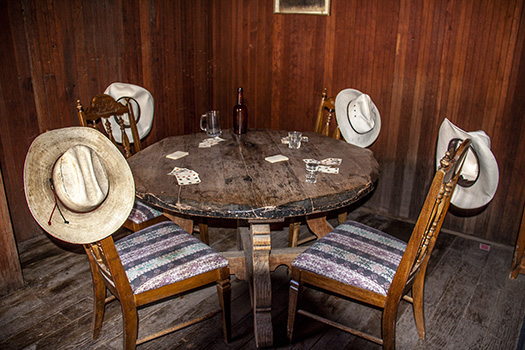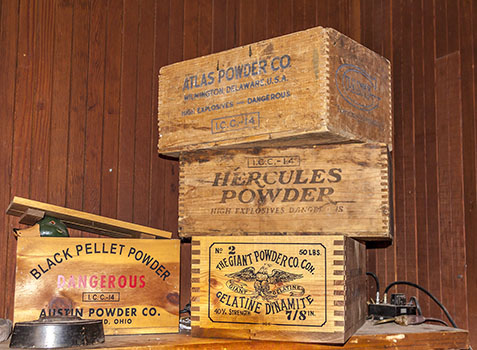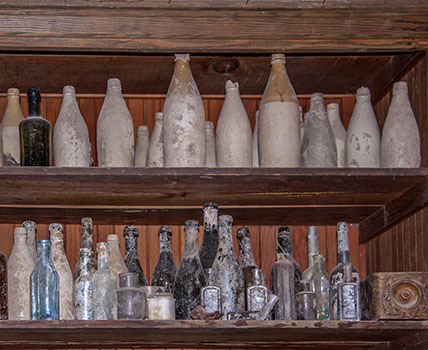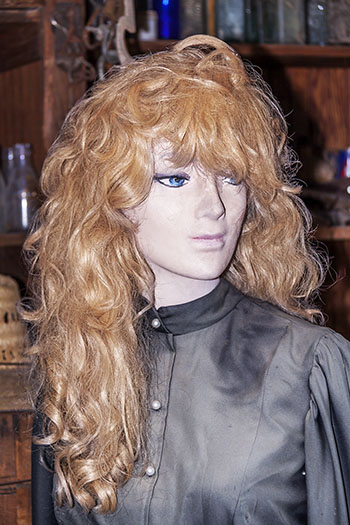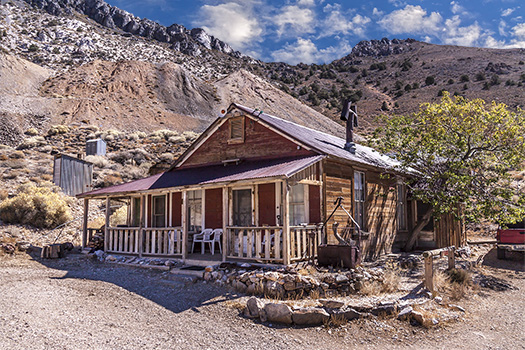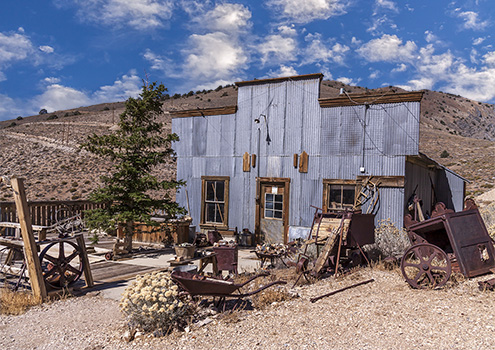


























































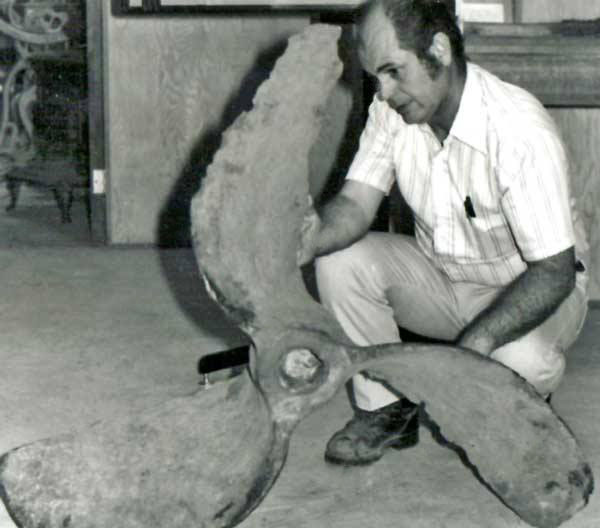
Bob Likes inspects the propellor of the Bessie Brady (Photo courtesy of Friends of Cerro Gordo) |
|
See USE NOTICE on Home Page |
"Cerro Gordo Mines Discovery, Inyo Co. - April 19, 1868"
Article courtesy of the Friends of Cerro Gordo
"Matters About Cerro Gordo"
Article courtesy of the Friends of Cerro Gordo
"Shooting in Cerro Gordo - February 15, 1873"
Article courtesy of the Friends of Cerro Gordo
 |
Christmas On The Mountain by Cecile Page Vargo (Courtesy of "Friends of Cerro Gordo") |
 |
It’s Christmas on the mountain, It’s getting very cold I often wonder what it was like, In the days of old The jingle bells that were heard Belonged to the mules Gee haw, was the loud cry The crack of the whip, the muleskinners controlling too Up and down the Yellow Grade The dust would most oft fly The wagons left with silver and lead ore Back with rum and rye Produce from the farms down south Also brought to town Miners happy and full Smelter fires kept burning, blue skies turning smoky brown Belshaw, Beaudry, Nadeau too Took in the most wealth Hard working the miner made enough Barely kept his health The money that was not lost In the old saloon Squandered on Lola’s girls Short moments of pleasure, dingy cribs lit by the moon The hotels had beds to rent Twelve hours at a time No wonder the newspapers oft said It’s Man for breakfast crime Violence ruled the old Fat Hill Bold headlines out cried Tired lone miner men Playing hard after their mine shift, tempers flared some of them died From this desert mountain town A quiet pueblo grew Metropolis got bigger than life Few men from then knew Big city Christmas glistens To spill over with excess Cerro Gordo mountaintop Spirits blowing with the wind, a ghost town in distress. I long for this mountain top Its quiet solitude To linger with the spirits Please don’t think me rude Christmas on the mountaintop Miner’s ghosts from days of yore I hear their voices singing Peace on earth, good will, Merry Christmas and so much more… |
||
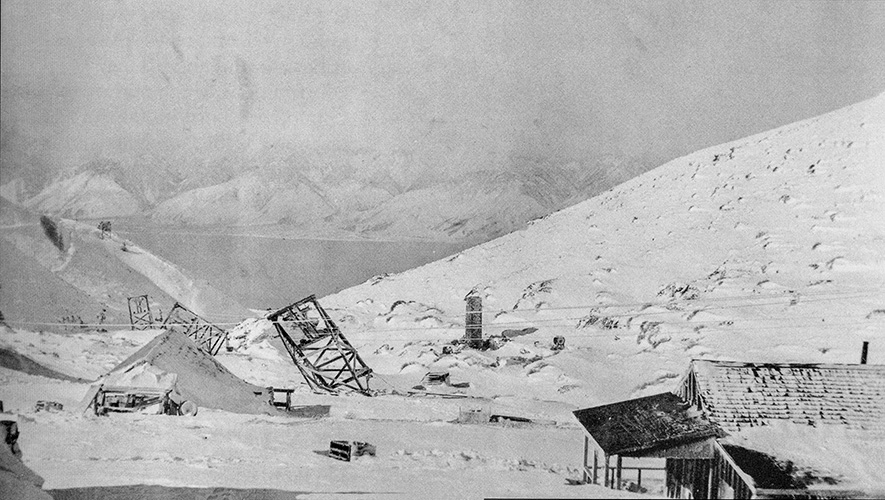 The Leschen tram damaged from heavy snowfall. Notice a "full" Owens Lake in the background before Los Angles drained the lake dry. (Photo courtesy of Roger Vargo) |
|
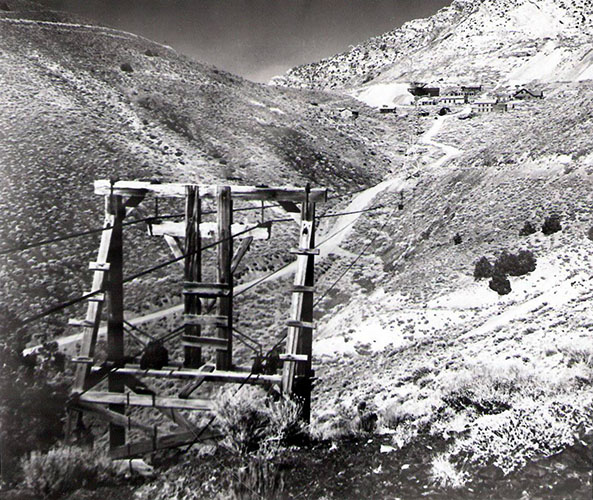 The Leschen tram - looking up towards "Fat Hill". (Photo courtesy of "Friends of Cerro Gordo") |
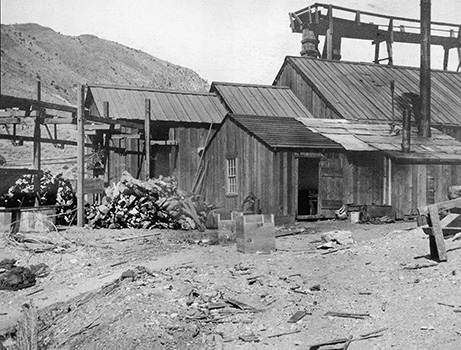 The Mongomery tram was file miles long, from below the main mine to the terminus just short of the town of Keeler, where the smelter was built. A total of 100 men were hired to build the tram. (Photo and text courtesy of Roger Vargo) |
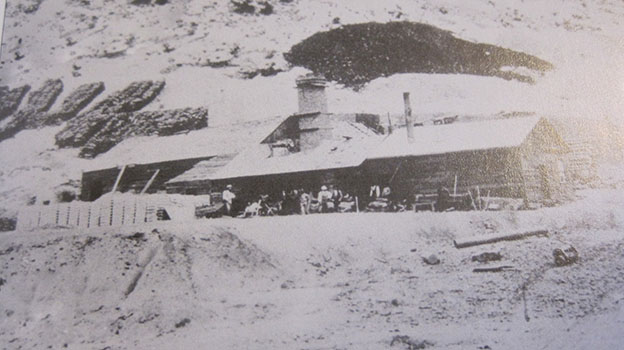 The Belshaw smelter is long gone, but this rare picture shows us what it looked like. Note at the front left a stack of bullion bars can faintly be seen. Cordwood fuel for the steam boiler is stacked on the mountainside behind the building. The blast furnaces were the highest techology of the day, producing 5.25 tons of bullion in 24 hours. Above the furnace chimney the dark area that looks like smoke is actually an outcropping of rich galena that ran 15 - 70 feet wide and 750 feet deep. (Photo & text courtesy of "Friends of Cerro Gordo") |
|
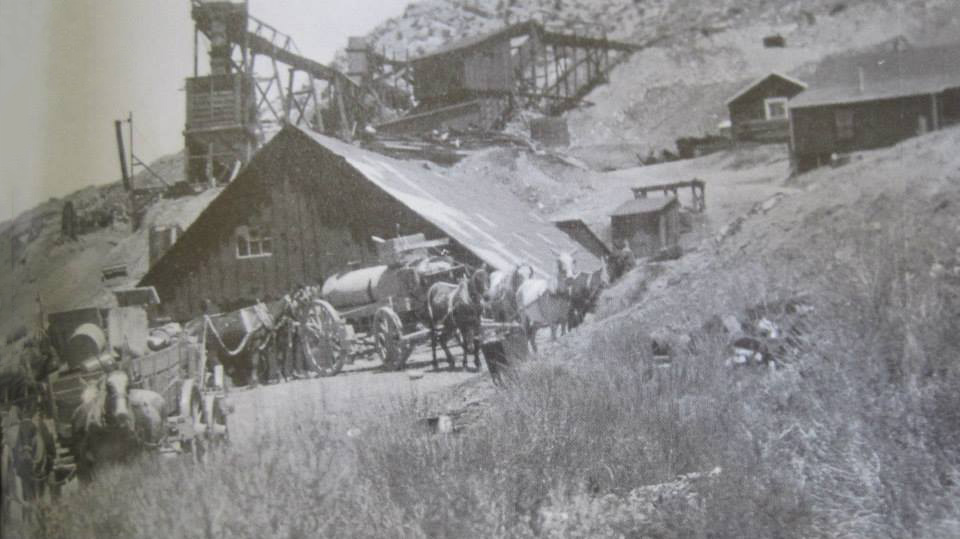 Mules and freight wagons can be seen outside of the original mule barn. Remi Nadeau's teams and drivers were the primary freighters of the silver and trade that went back and forth from Cerro Gordo and Los Angeles. (Photo & text courtesy of "Friends of Cerro Gordo") |
|
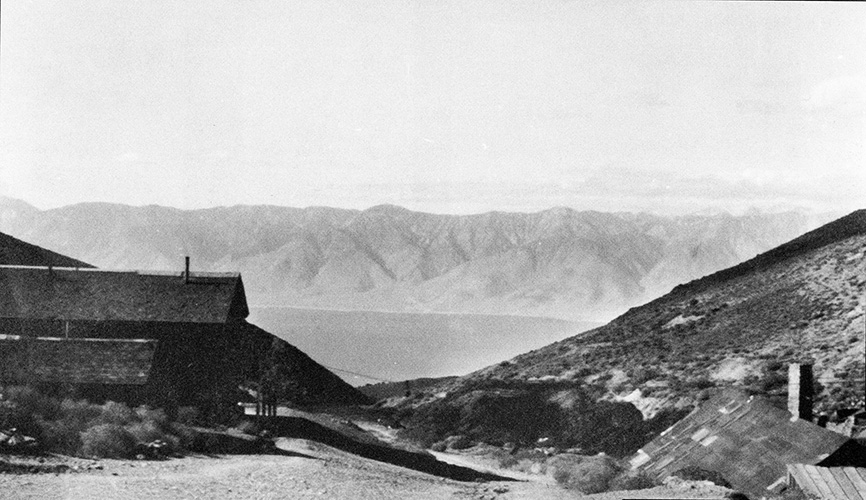 Nearly at the top of the mountain peak, Cornelia Gordon wife of zinc mining mogul, her son, and nanny arrived at the Cerro Gordo Mines when he took control of the mines. As they stepped out of the wagon, they turned to the view of Keeler down below. Cornelia described the view of the “dry soda lake turned the most heavenly blue... blue as sapphire” with Mount Whitney towering in the distance. (Photo & text courtesy of "Friends of Cerro Gordo") |
|
"The Jingle of Mule Teams"
by Remi Nadeau (this is the great, great grandson of the freighter baron, Remi Nadeau)
"The Fight for Cerro Gordo"
by Remi Nadeau
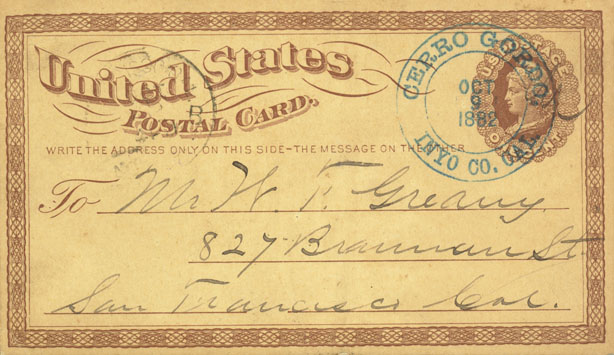 Cerro Gordo postcard. (Courtesy of Rich McCutchan) |
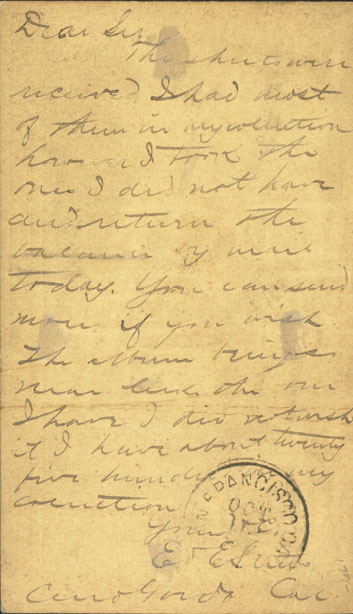 Cerro Gordo postcard. (Courtesy of Rich McCutchan) |
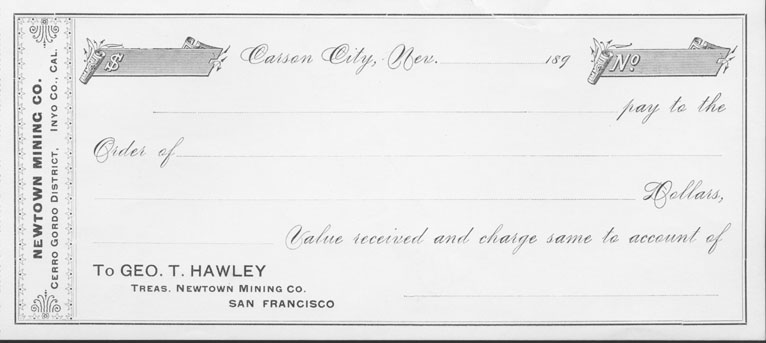 Cerro Gordo bank check. (Courtesy of Rich McCutchan) |
|
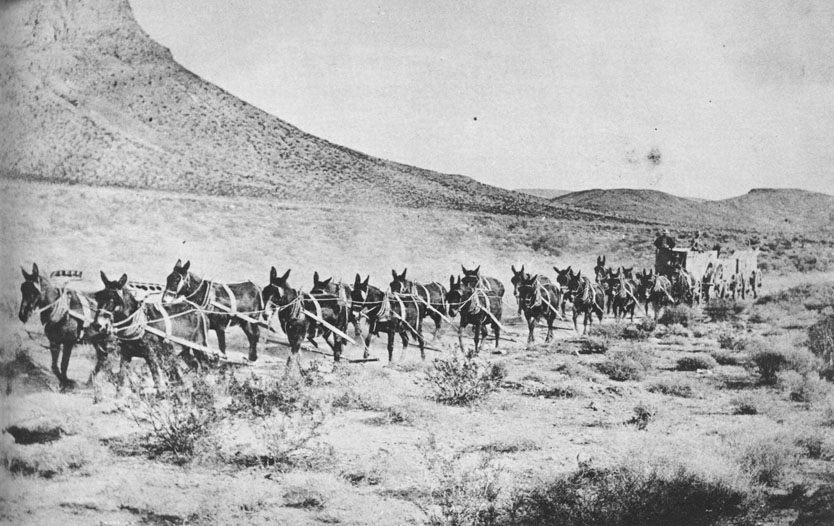 Remi Nadeau 18 mule team, hauling three wagons, was one of 100 mule teams operated by freighter Remi Nadeau to Cerro Gordo and other mining towns in the 1870s. Bells on the collars of lead mules warn fast traffic around blind bends. (Mrs. Jack Gunn) |
|
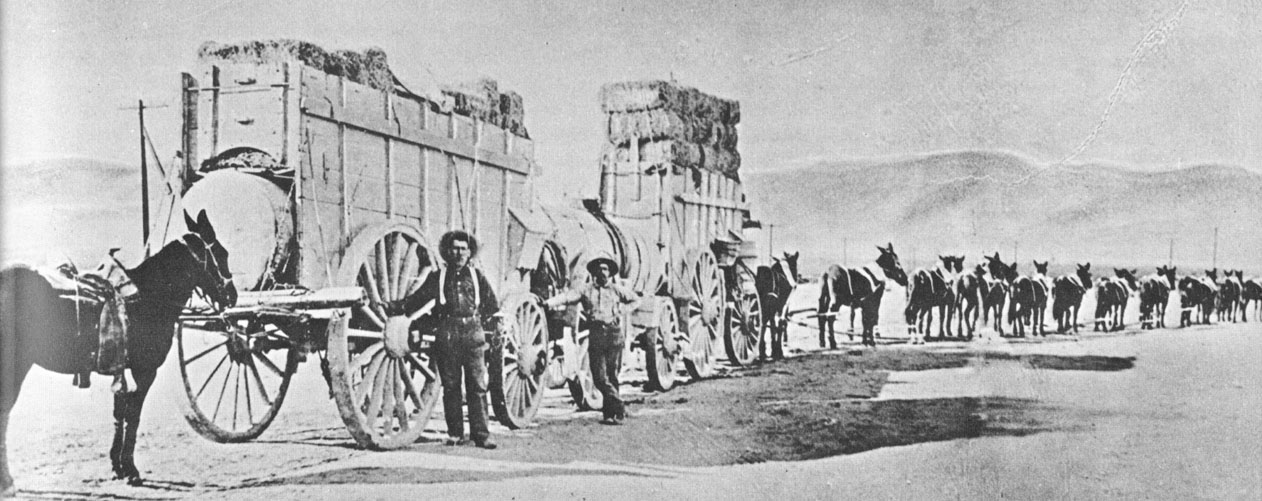 Remi Nadeau 22 mule team hauling hay to early mining regions of the Mojave Desert. Rigs piled this high were apt to be blown over in windstorms. (American Potash & Chemical Company) |
|
"The Bullion Kings"
by Remi Nadeau
A Walking History Tour of Cerro Gordo and Surrounding Mine Areas
by Max Rosan
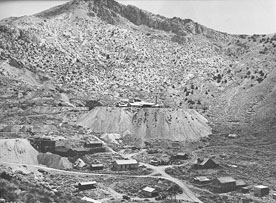 Cerro Gordo, or "Fat Hill" in Spanish (George Turner Collection) |
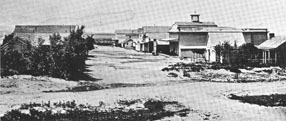 Independence in 1873. The tall roof of the courthouse can be seen on the right where the Cerro Gordo Union Mine suit was played out. (Eastern California Museum) |
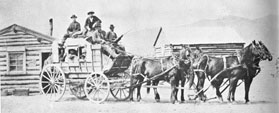 This is a typical stagecoach which would have rolled between Lone Pine, Independence, Swansea and Keeler during the silver mining boom days of the 1860s and 1870s. (Security-First National Bank) |
|
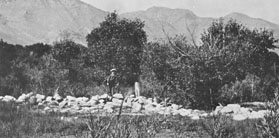 In 1929 this was all that was left of the Cerro Gordo Freighting Company rock wharf at Cartago. Here Cerro Gordo bullion was transferred to mule teams after being carried across Owens Lake on the steamer "Bessie Brady." [Photo by Remi E. Nadeau from his book - "The City-Makers"] |
|
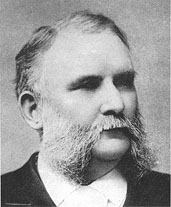 Pat Reddy who was M.W. Belshaw's wily lawyer. His brother, Ned Reddy, shot first in gun fights at Cerro Gordo and Lone Pine. (Los Angeles Public Library) |
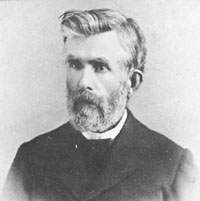 Pleasant A. Chalfant, a '49er, later settled in Owens Valley and founded the pioneer newspaper, the Inyo Independent, in 1870. His editorials condemned the lawlessness at Cerro Gordo. (C. Lorin Ray Collection) |
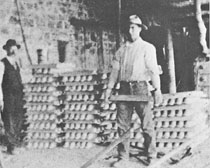 A day's bullion output from the mine smelters of Cerro Gordo. Here 300 silver-lead bars, each weighing 87 pounds an worth $335 each are stacked like cordwood. When the bullion accumulated, as it did during the control of freighting operations between the cities of Los Angeles and Ventura, the miners literally built cabins out of the bullion! (Eastern California Museum) |
|
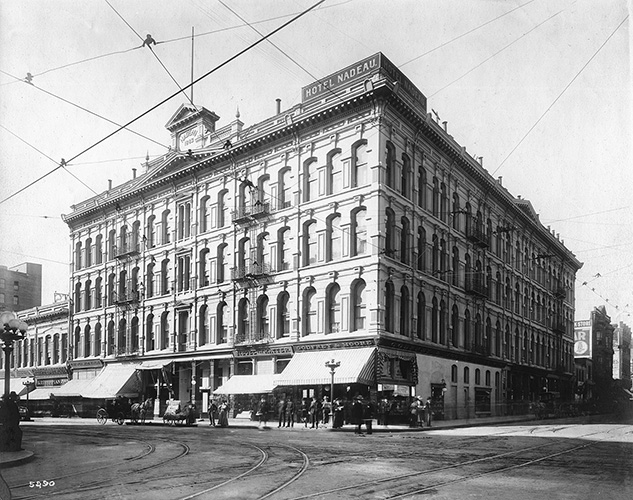 Around 1882 when the railroad came to the high desert of California and the silver boom of Cerro Gordo and Panamint had passed its heyday of record bullion production, Remi Nadeau sold his mule teams and built the first four-story building, and the first with and elevator, at First and Spring Streets in Los Angeles. The "Nadeau" was Los Angeles' leading hotel through the 1890s. (Photo courtesy of Wikimedia Commons) |
|
"The Fall of Cerro Gordo"
by Remi Nadeau
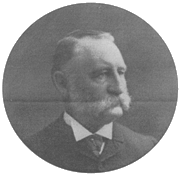 Captain Julius Keeler in the late 1870's |
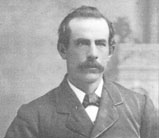 Casper Titchworth, Captain of the Bessie Brady circa 1879 |
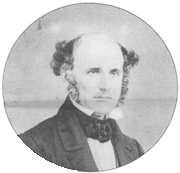 Colonel Sherman Stevens |
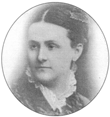 Molly Stevens, namesake of the second steamer on the Owens Lake |
||
|
Independence, California, Saturday, May 13, 1882 |
"High and Dry - Caretaking the Ghosts of Cerro Gordo"
by Christopher Langley
|
by U.S. Senator Borah of Idaho 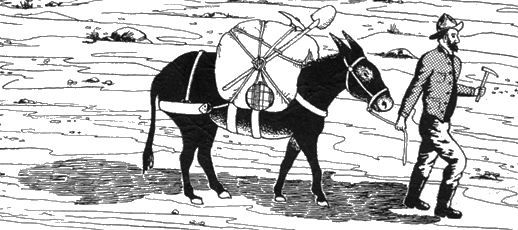 The prospector is one of the unique, one of the most exceptional and most worthy of all those remarkable characters who have exploited and led the way for the development of the west. The west owes him a debt of gratitude which the west can never pay. Always poor, often homeless, self-reliant, hopeful, generous and brave, he has been the solitary explorer of desert and mountain vastness. He is the one who unlocked from its imprisoned silence the countless millions of what is now the world's wealth. He penetrates the most remote and inaccessible regions, defies hunger and storms alike, sleeps upon the mountain side or in improvised cabins, restlessly wanders and searches through weeks and months and years for nature's hidden and hoarded treasures. Often-times his search ends in poverty and distress and failure, sometimes in success. Without the prospector - this poor isolated wanderer - the great mining centers of the west would not exist. Without his uneasy, never-tiring efforts, millions of dollars now on their way to minister to the happiness and comfort of the race would never have been poured into the channels of business and commerce. (Excerpt taken from "100 Years of Real Living" by the Bishop Chamber of Commerce, 1961) (Drawing by C. Lorin Ray) |
Courtesy Rich McCutchan Photocard Archives |
|
Cornelia Gordon Remembers Her Life with Louis D. Gordon
by Doug Gordon
Shotgun Kate & the Battle for Burgess
by Cecil Page Vargo
Louis D. Gordon & the Great Zinc Era
by Cecil Page Vargo
The Many Faces of Ned Reddy
by Cecil Page Vargo
Courtesy Ray DeLea Archives |
|
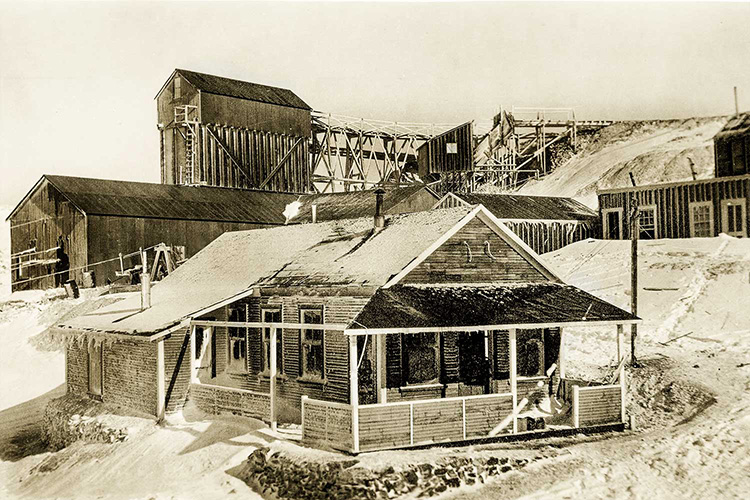 Snow blankets Cerro Gordo’s Leschen Tram (left center) terminal and other buildings in this photograph from the L.D. Gordon Collection taken approximately a century ago. (Photo courtesy of the Friends of Cerro Gordo) |
From the Northern Arizona University Philip Johnston Collection |
|
|
|
One Packer's High Sierra Experience | |
|
|
Brochures of the Eastern High Sierra | |
|
|
More,
Cerro Gordo |
|
|
Early Big Pine |
|
|
|
Early Bishop Pioneers |
|
|
|
Mary Austin |
|
|
|
Carson and Colorado Railroad |
|
Sign Guestbook View Old Guest Book Entries Oct 1999 - Feb 2015 (MS Word) |
 CONTACT the Pigmy Packer |
View Guestbook View Old Guest Book Entries Oct 1999 - Feb 2015 (PDF) |


